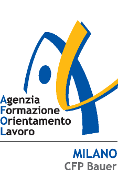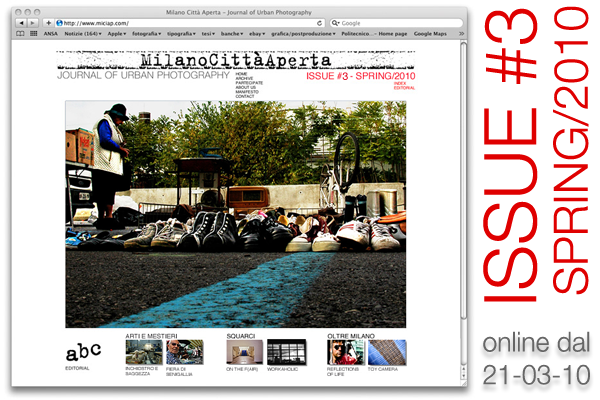EDITORIALE
MilanoCittĂ Aperta would like to hand it over to Giampietro Agostini and Laura Losito for the presentation of this current issue (10), dedicated to the Milanese farmsteads.
The identity of the Lombardy territory could be perceived as a mosaic of different and significant realities, amongst those the realities of the farming community, and its contesting elements that even today, become highlighted as more visible signs of our cultures and our traditions.
Rural spaces, as well as industrial estates, are the areas in which the most immediate interventions, reconversions and re-qualifications can actually be seen.
It is from this realisation, strongly bound to the idea of reutilisation, that a photographic analysis project was born, coordinated by the photographer Giampietro Agostini - a man that has always been fascinated by these themes, and Laura Losito - a lecturer of Humanities in Photography. This experience was conducted by students from the annual evening class Analogical Photography Digitalisation at the C.F.P. Bauer - Afol Milano, a school that has been dedicated to realising photographic projects since it opened in 1954.
The six works that have been selected for this issue of Miciap interpret and display the real life conditions of some farmsteads in the territory and the province of Milan. After the first research phase, and a multidisciplinary investigation, the photographers focused their attention on two possible types of farmsteads: those in disuse and those that are still active and that still maintain their original or different functions.
These works convey farming lands as places in which traditions, memories and knowledge are all present even after they have been completely transformed or reduced to rubble. Within these works, there is a sure sense of the time that has passed, that time has relentlessly modified them into non manageable places and has completely distorted their use in history to the core. In some cases, farmsteads become opportunities in which to develop conceptual ideas and reflections that dare to go beyond the normal matters involved in urban growth.
In foresight of the grand interventions of transformation and restoration in these rural spaces of the Milanese hinterland, in anticipation for the Expo 2015, this photographic project will continue to be developed in the next few years in order to be appreciated as a concrete contribution to the history and the memory of our city.
Many thanks to the CFP Bauer in Milan, to Giampietro Agostini, Laura Losito and all those authors and students that have made this interesting and ongoing research and publication possible.



